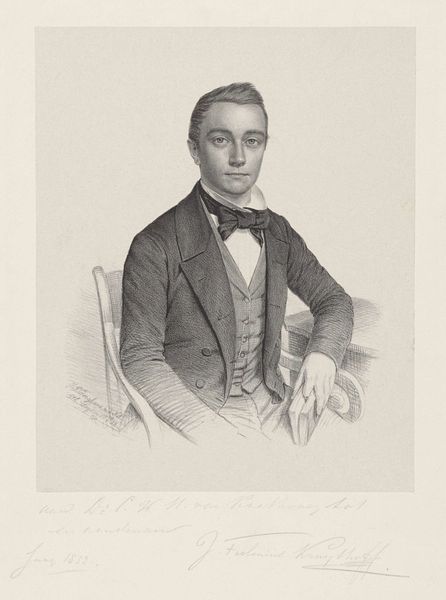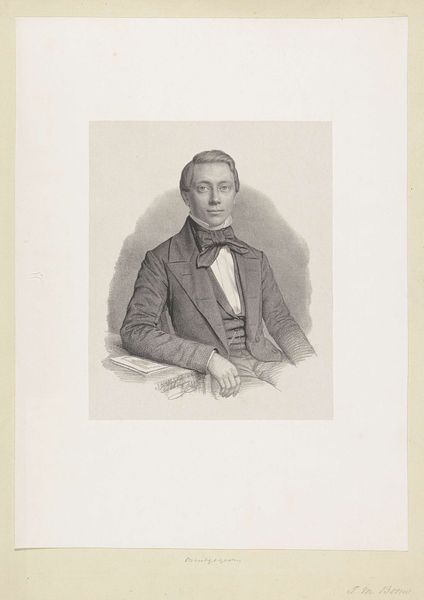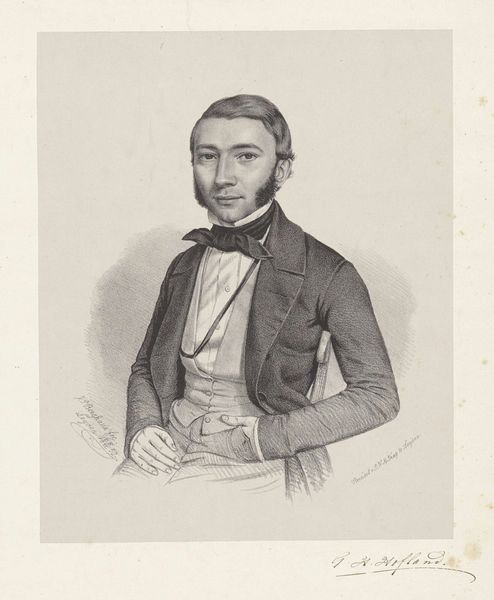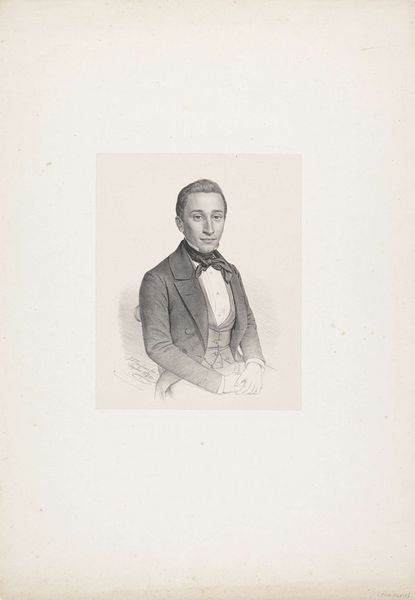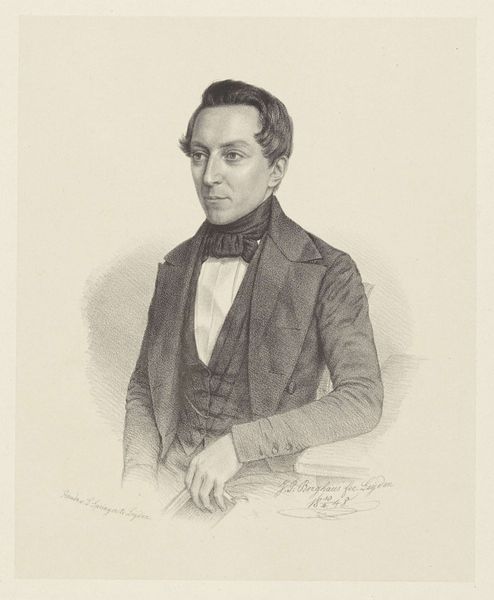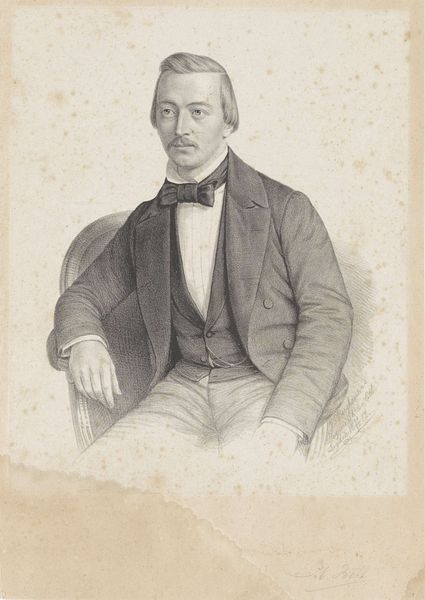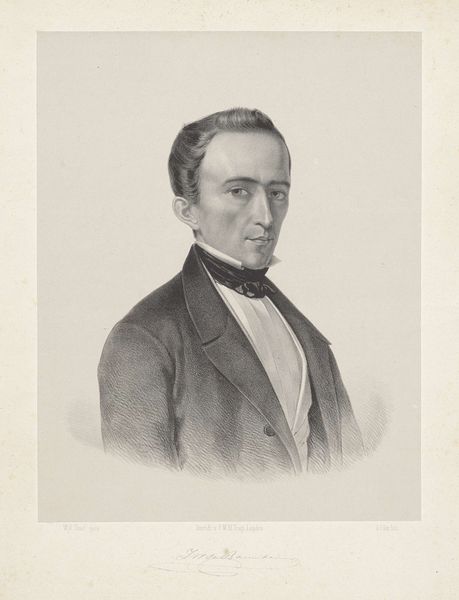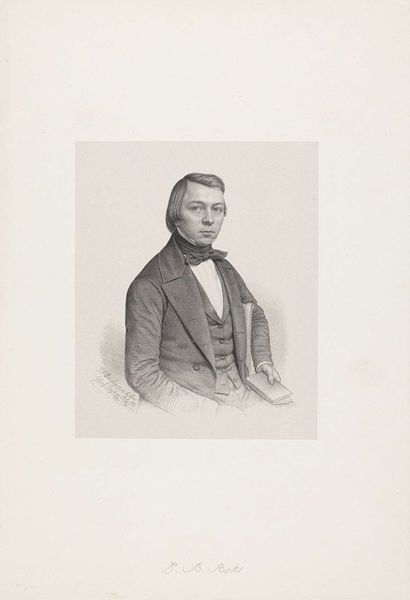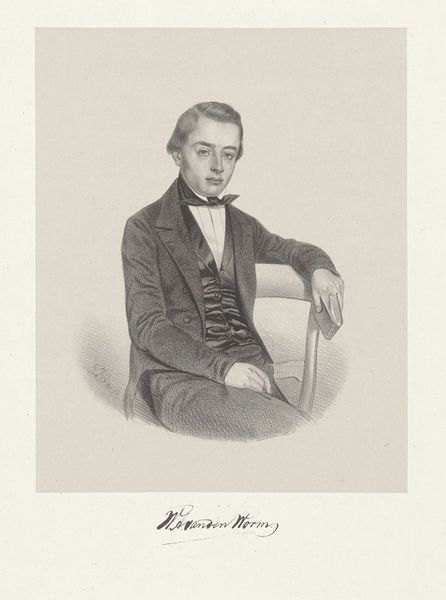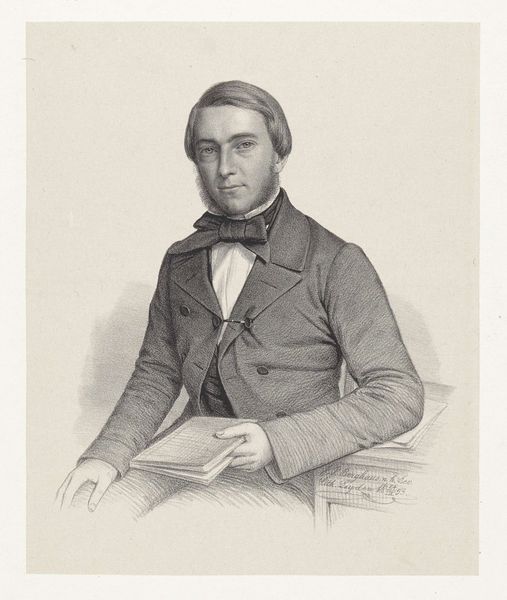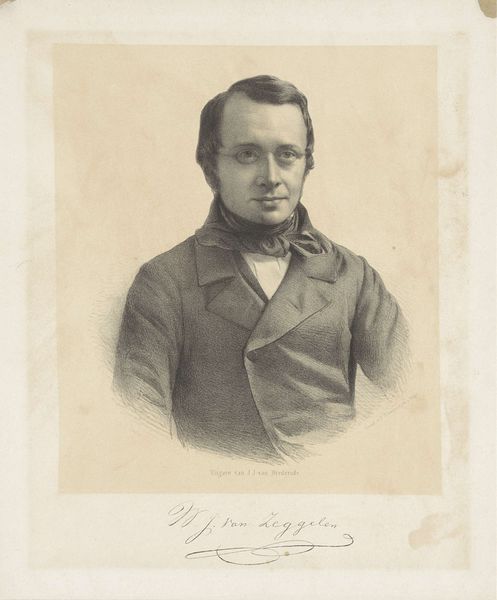
Dimensions: height 352 mm, width mm
Copyright: Rijks Museum: Open Domain
Curator: Well, here we have the "Portrait of A.F. Goudriaan," tentatively dated to 1855 and currently held in the Rijksmuseum. It's a pencil drawing by Johann Peter Berghaus. Editor: It's quite striking! There's an intensity in his gaze and I am captivated by the incredible detail achieved with simple pencil strokes. The soft shading gives it a real depth, almost lifelike, contrasting nicely with the sharp line-work, though he seems rather stiff and posed. Curator: Indeed. Think about the labor involved. Berghaus’ choice of pencil reflects broader social changes. Graphite became widely available in the 19th century, democratizing portraiture. Previously, such refined likenesses would have been reserved for painted oil portraits for wealthy patrons. Editor: That speaks to accessibility and shifting class dynamics. The burgeoning middle class sought ways to emulate aristocratic culture. Pencil portraits became a way to participate in the established culture of formal portraiture without exorbitant costs. We can also imagine the influence this piece has had in representing a civic figure within its context in Dutch history. Curator: Exactly. The very process—pencil on paper—reveals something about the culture of the time, how images were circulated and consumed. I wonder what sort of paper he would have used; was it mass-produced or hand-laid? The texture might give us insight. Editor: Also interesting to note: The choice to portray A.F. Goudriaan as a figure worthy of artistic commemoration. Considering Berghaus himself as the image producer allows one to question who defines representation in civic contexts. The placement of this work within a museum elevates it further, shaping our understanding of 19th century Dutch society. Curator: A very valid point, especially considering the Romantic style which speaks to the valorization of individual subjects, carefully produced and disseminated to signal the figure of the bourgeois subject with its own visual economy, embedded within networks of exchange and viewership. Editor: Ultimately, both artist and sitter collude within systems that grant them agency through visual portrayal in socio-cultural registers of class, taste, and artistic interpretation. This work offers a complex meditation on the individual and their relationship to social systems of representation. Curator: Precisely. The material constraints of pencil drawing met the rising aspirations of a specific social stratum, all within a framework dictated by institutions like the museum. Editor: Indeed, an image that prompts a broader analysis of both individual and societal perspectives!
Comments
No comments
Be the first to comment and join the conversation on the ultimate creative platform.
